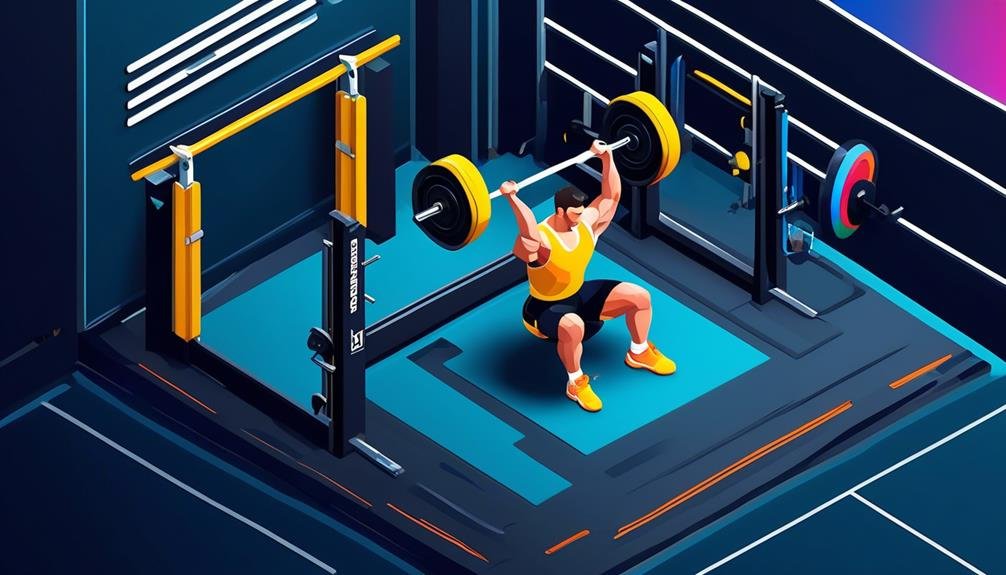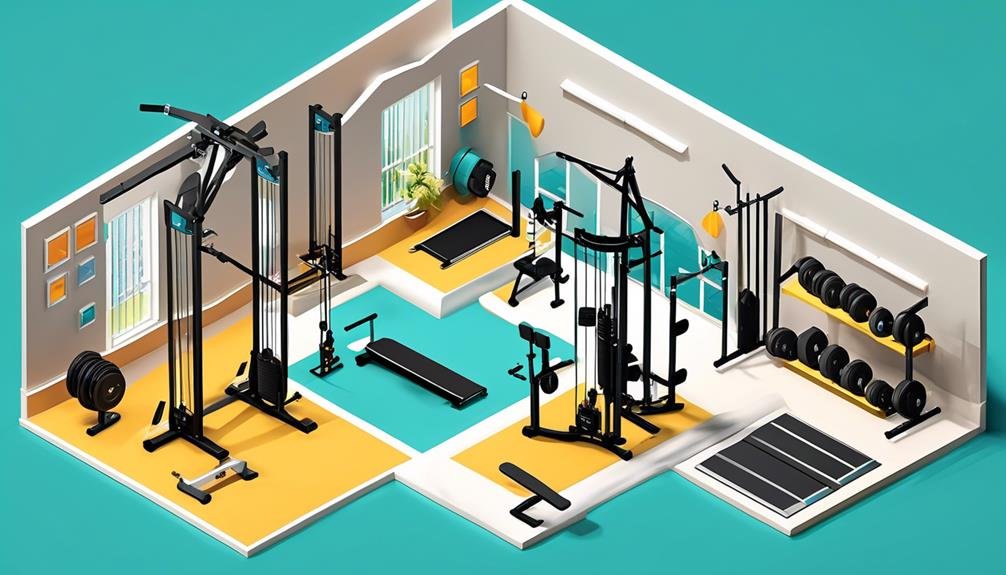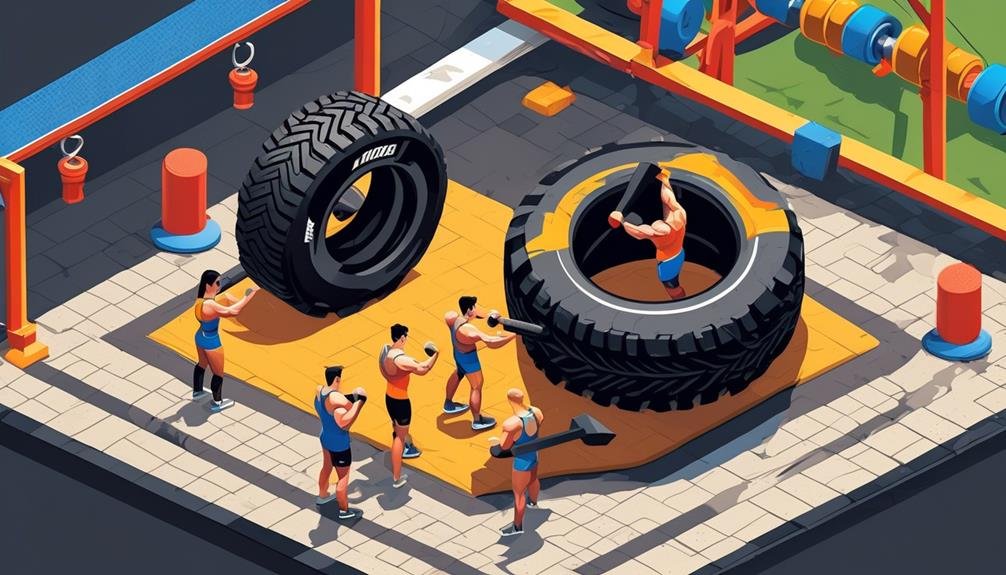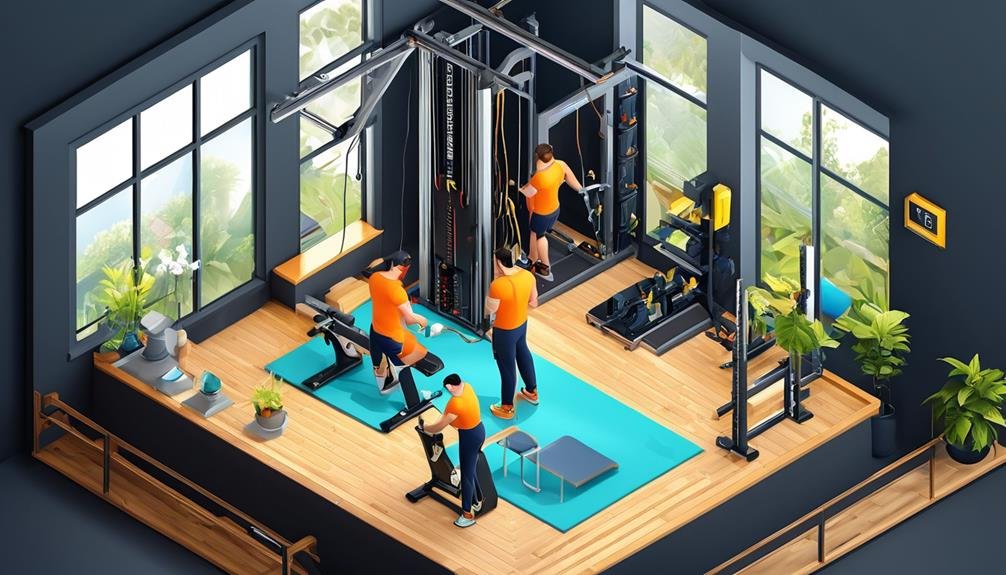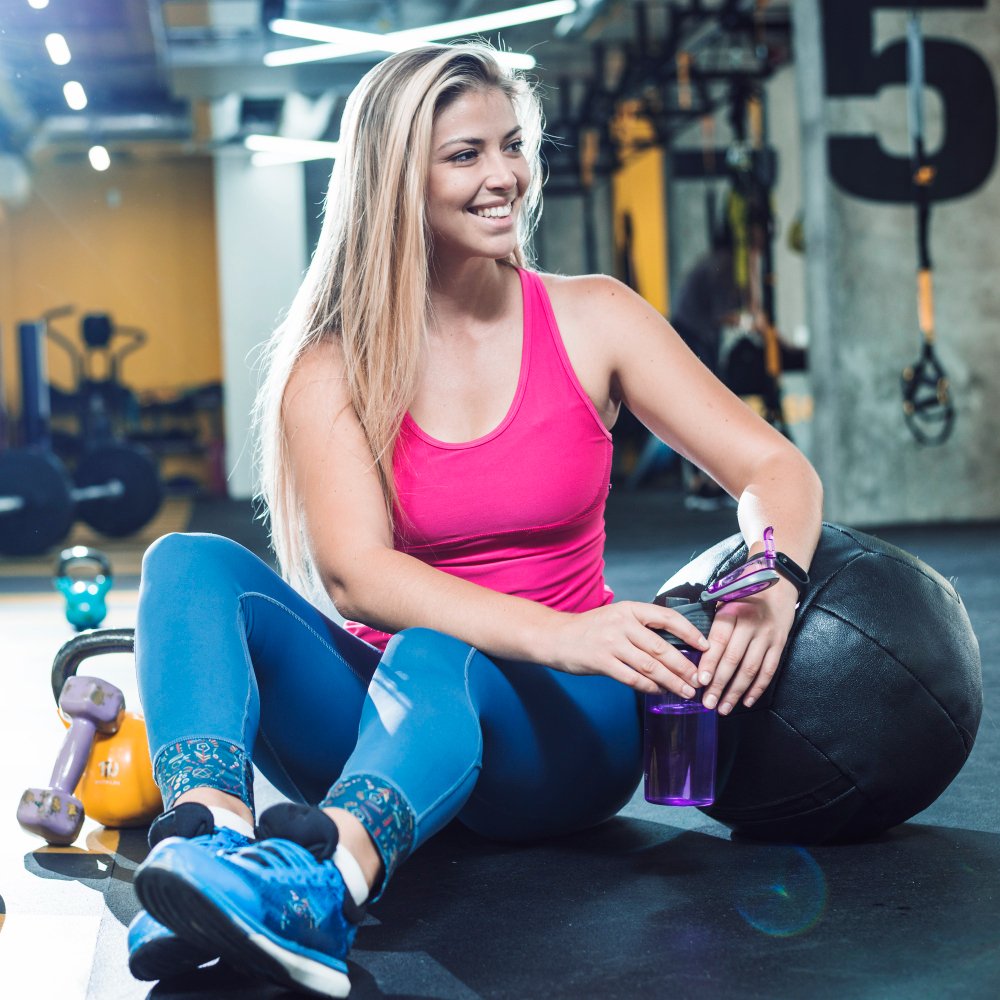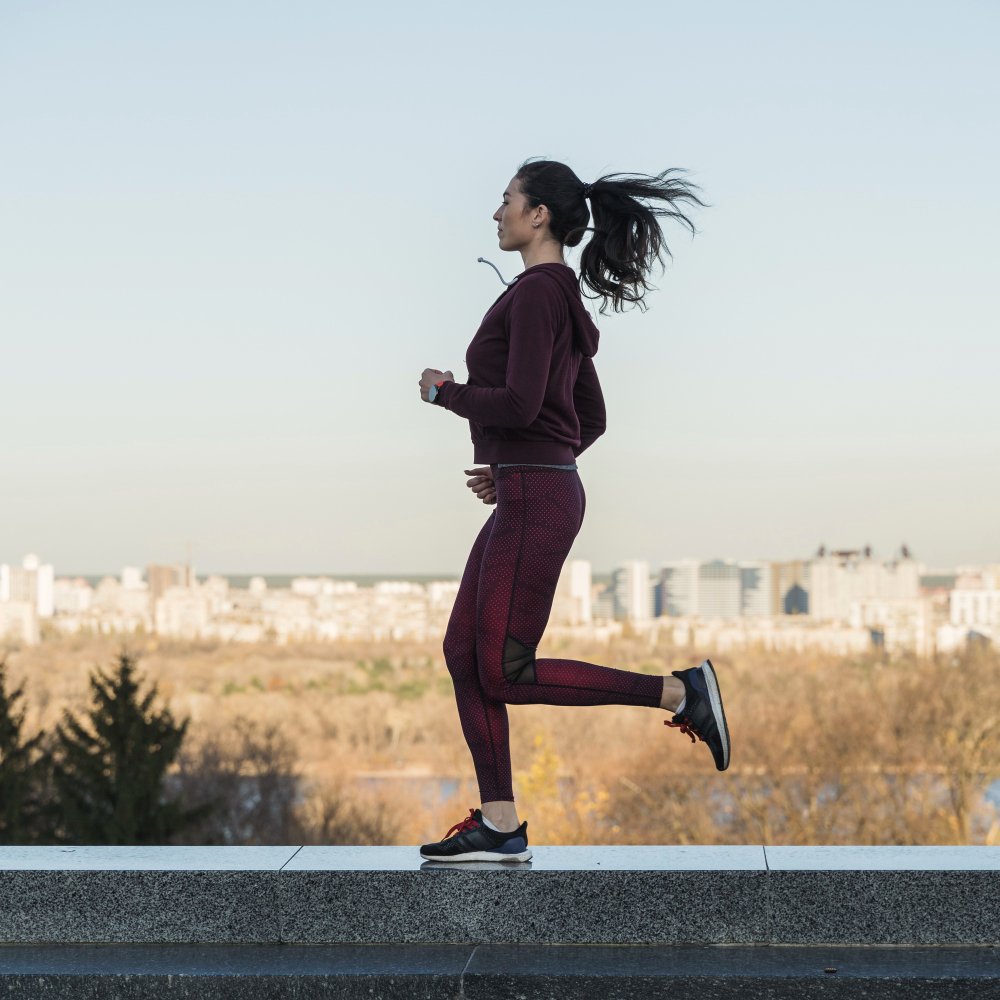Imagine yourself standing in a well-lit gym, the clanging of weights echoing in the background as you prepare to embark on a challenging workout.
You've heard about the benefits of Olympic lifts like snatches, but a question lingers in your mind: is it safe to work out alone using these complex movements?
Well, fear not, because in this discussion we will explore the importance of proper technique, potential risks and injuries, benefits of having a spotter or coach, as well as solo training tips for minimizing risks.
So, let's dig deeper and uncover the truth about working out alone with snatches.
Key Takeaways
- Proper technique and execution are crucial for optimal results and to minimize the risk of injury when performing Olympic lifts like snatches.
- Overhead movements like the snatch can lead to shoulder injuries if not executed correctly, highlighting the importance of maintaining proper form.
- Having a spotter or coach is highly recommended to ensure safety, provide real-time feedback, and tailor training programs based on individual needs.
- Solo training can be done safely by working with a qualified coach initially, starting with lighter weights, using safety equipment, and practicing in a well-equipped area.
Importance of Proper Technique
Proper technique is crucial when performing Olympic lifts on your own, as it ensures optimal results while minimizing the risk of injury. Olympic lifting, such as the barbell snatch, engages multiple muscle fibers and requires precise movements to maximize strength and power gains.
To execute this lift correctly, start with a shoulder-width grip on the bar and maintain a strong, neutral spine position throughout the movement. Initiate the lift by driving through your legs and extending your hips explosively, transferring the force to the barbell. As the barbell reaches hip height, quickly pull yourself under the barbell by aggressively shrugging your shoulders and pulling your body down into a deep squat position. With a strong overhead position, lock out your elbows and stand up with the weight.
Proper technique is essential in Olympic lifting to ensure that you're efficiently utilizing your muscle fibers and avoiding unnecessary strain on your joints. Additionally, it helps to maintain stability and control throughout the lift, reducing the risk of injury.
Remember to always prioritize technique over weight, and if you're unsure about your form, consider seeking guidance from a qualified coach or trainer.
Potential Risks and Injuries
When performing Olympic lifts on your own, it's crucial to be aware of the potential risks and injuries that can occur if proper technique and form aren't maintained. Olympic lifting can be a highly effective way to improve strength, power, and conditioning, but it also carries inherent risks. Here are three important factors to consider:
- Overhead Movements: The snatch and clean & jerk, two fundamental Olympic lifts, involve lifting the barbell overhead. If these movements aren't executed correctly, there's a risk of shoulder injuries, such as rotator cuff strains. It's essential to maintain proper alignment and stability throughout the lift to minimize this risk.
- Back Injuries: Olympic lifts, especially the snatch and clean & jerk, require a strong and stable lower back. However, improper lifting techniques can lead to lower back injuries such as strains and disc issues. Maintaining a neutral spine and engaging the core muscles are essential for protecting the lower back during these lifts.
- Wrist and Elbow Strains: The catch phase of Olympic lifts involves rapid and forceful extension of the wrists and elbows to stabilize the weight overhead. This can potentially result in strains and overuse injuries if the wrists and elbows aren't properly conditioned and strengthened. Gradually increasing the load and ensuring proper wrist and elbow alignment can help mitigate this risk.
Benefits of Having a Spotter or Coach
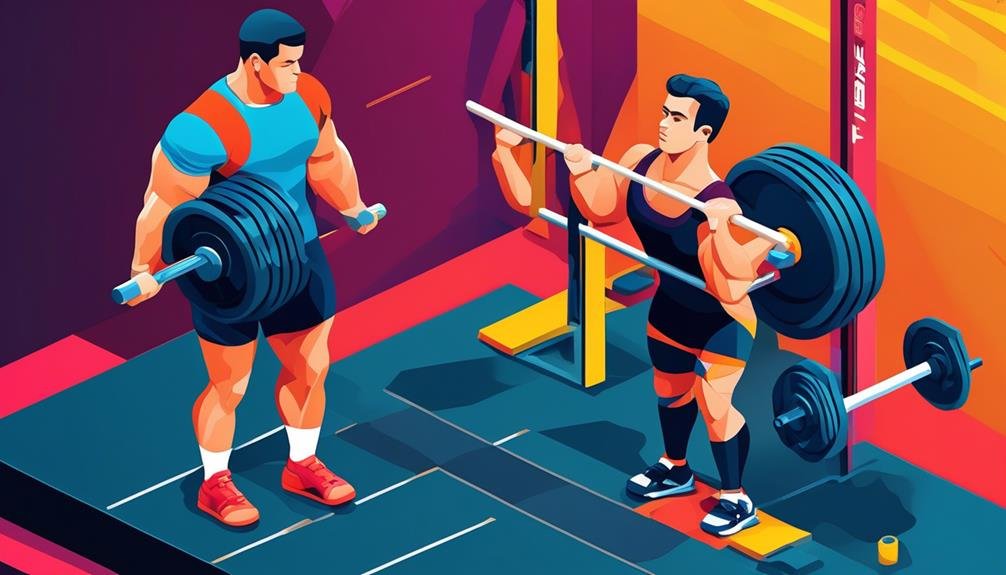
Having a spotter or coach while performing Olympic lifts is essential for ensuring safety and optimizing performance. In the world of strength training, where power and precision are paramount, having a knowledgeable individual by your side can make all the difference.
USA Weightlifting, the governing body for Olympic weightlifting in the United States, emphasizes the importance of having a spotter or coach to guide lifters through their training journey.
One of the primary benefits of having a spotter or coach is the assurance of safety. Olympic lifts, such as the snatch, involve lifting heavy weights overhead with explosive force. Without proper guidance, these lifts can pose a significant risk of injury. A spotter or coach can provide immediate assistance in case of accidents, reducing the likelihood of severe harm.
Furthermore, a spotter or coach offers real-time feedback on form and technique. This feedback is crucial for optimizing performance and preventing injuries. They can identify any flaws or imbalances in your lifting mechanics and provide corrective advice to help you lift more efficiently and effectively.
In addition to safety and technique, a spotter or coach serves as a source of motivation, encouragement, and accountability. They push you to go beyond your limits, helping you achieve your goals and stay committed to your training program. Moreover, they can tailor your training programs and progressions based on your individual strengths, weaknesses, and aspirations.
Solo Training Tips for Minimizing Risks
To minimize the risk of injury, it's crucial to implement certain strategies when training alone with Olympic lifts. Solo training can be challenging, but with the right approach, you can maximize safety and effectiveness.
Here are three tips to help you minimize risks during your solo training sessions:
- Ensure Proper Technique: Olympic lifts like snatches require precise form and technique. Before attempting these lifts alone, it's essential to have a solid foundation and understanding of the correct movement patterns. Work with a qualified coach or trainer to learn the proper techniques and cues. Video analysis can also be a valuable tool for self-correction.
- Start with Light Weights: When training alone, it's important to start with lighter weights to build confidence and perfect your technique. Gradually increase the load as you become more comfortable and proficient. This approach will help minimize the risk of injury and allow you to progress safely.
- Use Safety Equipment: Investing in safety equipment is crucial for solo training with Olympic lifts. Consider using a power rack with adjustable safety bars to catch the barbell if you fail a lift. Additionally, using weightlifting belts, wrist wraps, and knee sleeves can provide extra support and stability, reducing the risk of injury.
Final Thoughts on Working Out Alone With Snatches
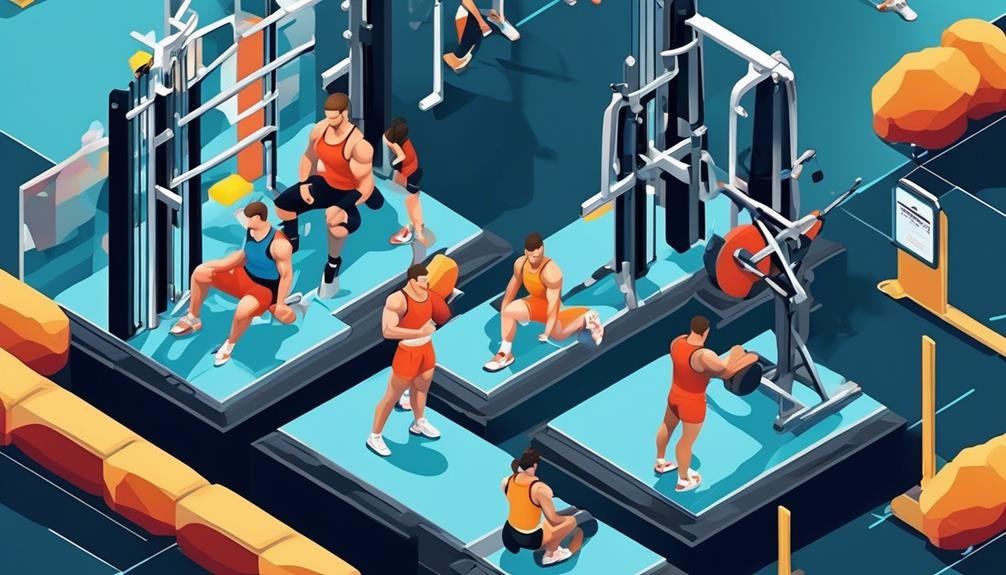
Working out alone with snatches requires strict adherence to proper form and technique to ensure safety and maximize effectiveness. Olympic lifts like snatches can be highly beneficial for strength and power development, but they also come with inherent risks. When performing snatches without a spotter or coach, it's crucial to prioritize safety and take necessary precautions.
First and foremost, it's essential to have a solid foundation of strength and mobility before attempting snatches alone. These lifts require a high level of coordination, balance, and flexibility. Without proper strength and mobility, the risk of injury increases significantly.
Additionally, it's crucial to start with lighter weights and gradually progress to heavier loads. This approach allows you to focus on mastering the technique and reducing the risk of injury. It's advisable to work with a qualified coach or trainer initially to learn the correct form and receive feedback on your technique.
Furthermore, always practice in a well-equipped and spacious area. Ensure that the floor is clear of any obstacles, and there's ample space for you to move freely. This will minimize the chances of accidents or injuries caused by tripping or colliding with objects.
Lastly, listen to your body and know your limits. If you experience any pain or discomfort during the snatch, stop immediately and assess the situation. Pushing through pain can lead to serious injuries, so it's better to err on the side of caution.
Frequently Asked Questions
What Are the Risks of Olympic Lifting?
The risks of Olympic lifting include potential injury due to incorrect form, lack of coaching and supervision, and the explosive nature of the movements. It is important to prioritize safety and proper technique when performing these lifts.
Can You Learn Olympic Lifts by Yourself?
Yes, you can learn Olympic lifts by yourself. However, it is highly recommended to seek coaching or join a class with certified coaches to ensure proper technique, mechanics, and programming for safe and effective training.
What Is the Injury Rate for Olympic Weightlifting?
The injury rate for Olympic weightlifting is low. Weightlifting incurs only 0.0017 injuries per 100 hours of participation. Start with lighter weights and gradually increase intensity. Weightlifting is considered safer than soccer.
Are Olympic Lifts Healthy?
Olympic lifts like snatches can be healthy when performed correctly. Start with lighter weights and gradually increase intensity. Seek coaching or join a class with certified coaches to ensure proper technique and minimize the risk of injury.
Conclusion
In conclusion, it's safe to work out alone using Olympic lifts like snatches when proper technique and safety precautions are followed. By starting with lighter weights and gradually increasing intensity, individuals can ensure proper form and minimize the risk of injury.
While having a spotter or coach is beneficial, solo training can still be safe and effective when approached with caution and attention to detail. Remember to prioritize safety at all times and progress at a comfortable pace for optimal results.
